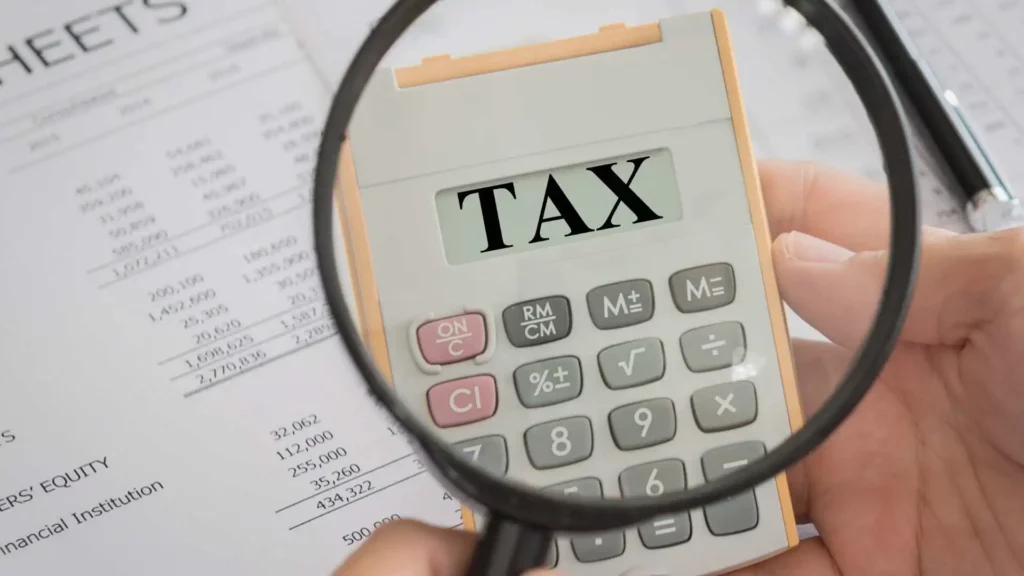Taxes are vital for government functions, and the average tax rate measures the proportional tax burden. This guide navigates through its calculation, distinctions from marginal rates, historical changes, and their implications in the US tax system, including insight into the average tax rate in the United States.
What is an Average Tax Rate?
The average tax rate is the percentage of your total taxable income that you actually pay in taxes. It’s calculated by dividing your total tax liability by your total taxable income. This rate reflects the combined effect of all applicable tax brackets, deductions, and credits, giving you a holistic view of your overall tax burden.
These revenues, collected through various taxation methods like income, sales, property, and import duties, contribute to governmental operations. For instance, a $30,000 purchase with a 7% sales tax requires $2,100 in taxes collected by sellers.
The average tax rate highlights the share of one’s earnings or property value dedicated to sustaining essential public services, playing a crucial role in evaluating tax system fairness and societal contributions.
How to Calculate Average Tax Rate
A structured process involves several essential steps to calculate the average tax rate:
1. Identify Filing Status: Determine the appropriate filing status, such as single, married, filing jointly, or head of household.
2. Obtain Taxable Income: Gather the taxable income earned within the period.
3. Refer to Tax Schedules: Compare the total taxable income against the relevant tax schedules provided by the tax authority.
4. Calculate Tax Using Marginal Rates: Utilize the marginal tax rate applicable to the income range. Multiply the excess amount over the specified salary bracket by the corresponding marginal tax rate.
5. Compute Additional Taxes: Determine additional taxes by applying the excess amounts to each subsequent tax bracket based on respective marginal rates.
6. Sum Total Taxes: Aggregate all calculated taxes, including those derived from various income brackets.
7. Compute Average Tax Rate: Calculate the average tax rate by dividing the taxes paid by the total taxable income. This division yields the proportion of total income allocated toward taxes on average.
Average Tax Rate Formula
The formula to calculate the average tax rate is straightforward:
Average Tax Rate = Total Taxes Paid / Total Taxable Income
The marginal tax rate details taxes within income brackets, while the average tax rate reflects the total income percentage allocated to taxes.
Marginal rates show taxes on additional income, whereas average rates present the overall income share dedicated to taxes, offering a comprehensive tax burden perspective.
Who Pays Higher Average Tax Rates?
Higher-income individuals face elevated average tax rates in the US due to the progressive federal tax system.
IRS data 2016 accentuated this divergence: the top 1% of earners experienced a significant 26.9% average income tax rate, distinctly higher than the modest 3.7% average tax rate borne by the bottom 50%. This difference highlights the progressive tax system’s inclination to impose a more substantial tax load on wealthier individuals than those with lower incomes. Check out Beem Tax Calculator to get a quick and accurate estimate of your federal and state tax refund for free.
How Have These Rates Changed Over Time?
Over time, US tax rates have shown erratic patterns. 1913, during World War I, a progressive federal income tax was introduced, spanning 1% to 7% across all taxpayers. The zenith arrived in 1944-1945 with a record 94% highest marginal tax rate.
By 2023, this rate stands at 37%, illustrating dynamic shifts influenced by economic needs, wartime demands, and evolving tax system adaptations, accounting for varying filing statuses. These fluctuations characterize the complex evolution of US taxation.
What is the Average Tax Rate in America?
Determining the average tax rate in the United States proves challenging due to the progressive tax system with seven brackets ranging from 10% to 37%. While the 24% tax bracket might imply a 24.57% average, actual figures vary.
One measure suggests a 13.3% average tax burden for all taxpayers, while another reports over 28%. In 2018, the top 50% of taxpayers bore 97.1% of federal income taxes, with an average tax rate of 14.6% and a $20,663 average payment.
The OECD cited a 28.4% “tax wedge” for the average single worker in 2021. These discrepancies highlight the complexity of determining a definitive average tax rate due to the diverse income distributions and methodologies used.
What is the difference between the average and marginal tax rates?
While the average tax rate refers to the overall tax burden as a percentage of total income, the marginal tax rate signifies the tax percentage paid on the last dollar earned. The marginal tax rate is pivotal for making financial decisions since it shows the tax impact on additional earnings. It’s typically higher than the average tax rate due to progressive tax systems. The table below summarizes the key differences between average and marginal tax rates.
| Criteria | Average Tax Rate | Marginal Tax Rate |
|---|---|---|
| Definition | The proportion of total taxes paid to total taxable income. | The tax percentage levied on the next dollar earned. |
| Calculation Method | Total taxes paid divided by total taxable income. | Corresponds to the tax bracket applicable to specific income. |
| Application | Provides an overall view of the average tax burden. | Applies to additional income earned within specific brackets. |
| Represents | Total tax burden relative to entire income. | Tax rate on the last dollar earned within a tax bracket. |
| Fixed or Variable | Represents an average and remains relatively stable. | Varies based on income level and tax bracket progression. |
| Influence on Financial Decisions | Useful for overall financial planning and budgeting. | Impacts decisions regarding additional income or deductions. |
Conclusion
The average tax rate is a fundamental indicator of individuals’ or entities’ overall tax burden. It’s calculated by dividing total taxes paid by total taxable income, showcasing the percentage of income allocated toward taxes. Understanding these rates and their implications is pivotal for financial planning and tax compliance.
Utilizing online tax filing platforms like Beem streamlines tax procedures, providing user-friendly interfaces and expert guidance. Understanding disparities between average and marginal tax rates, alongside updated tax laws, aids in efficient financial management and compliance for individuals and businesses.
FAQs
What is the United States’ average tax rate?
The Organization for Economic Co-operation and Development estimates that the average tax rate in the United States in 2021 was 22.6%.
What is the typical tax rate in the US?
In 2023 and 2024, there will be seven different federal income tax rates: 10%, 12%, 22%, 24%, 32%, 35%, and 37%. Your filing status and taxable income determine the rates applicable to you.
How do you calculate the average tax?
The average tax rate is calculated as follows: total taxes / taxable income.






























